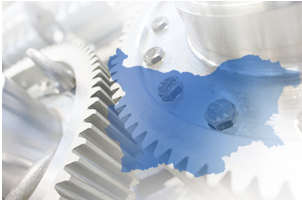Gross Domestic Product – flash estimates
According to NSI flash estimates, GDP expanded by 4.5% yoy s.a. in Q1 2022. The increase was driven by final consumption which went up by 6.6%. Exports increased by 11.8%, while imports went up by 13.6%. Gross fixed capital formation decreased by 6.1%.
Short-term Business Statistics
The growth of most of the short-term indicators accelerated in March. The increase in industrial production reached 19.5% and the acceleration was due to the higher growth in the manufacturing of both energy products and consumer non-durable products such as wearing apparel, food and beverages. These goods, together with the manufacturing of basic metals and chemical products, also had a leading contribution to the industrial turnover growth (68%). The growth of the retail trade turnover reached 9.6% with an acceleration in trade with non-food products. The construction production index increased by 2.4% driven by building construction.
In April, the business climate indicator almost recovered after the fall in March. There was an improvement in the expectations for the business situation of the enterprises in industry, services and retail trade. Compared to January, the average capacity utilization in industry increased by 1.3 pps and reached 76.3%. The expectations for construction activity were more reserved as the number of respondents who declared problems with costs and shortage of materials increased further.
Labour market
According to the Labour Force Survey (LFS) data for Q1 2022, labour market indicators have already come back to the levels observed in 2019, i.e. the last year before the COVID-19 pandemic. The participation rate of the population aged 15 to 64 was 72.0%, the employment rate was 68.4%, and the unemployment rate was 5.0%. Over the same period a year earlier, employment increased by 1.3%, which was mainly due to the recovery of economic activity in services. The unemployment rate decreased by 1.4 pps yoy and if the favourable trends on the labour market continue during the summer months of the year, it can be expected the unemployment rate to decrease to the 4-4.5% interval, which is considered as very close to the natural level of unemployment in the country.
Wages
In Q1 2022, the country’s nominal wage growth reached 9% yoy and offset the observed increase in consumer prices. Real wage, deflated by the HICP, grew by a marginal rate of 0.1%. Recent wage dynamics slightly decelerated compared to 2021, however, the private sector contribution was stronger. Unlike the previous year, public sector reported significantly lower growth rate of 1.8% yoy, while wages in the private sector retained a double-digit rate at 11.6%.
Upward wage developments were driven by services excl. public sector. The latter also accounted for the largest increases of employees. In the first quarter, the highest nominal wage growth rates were reported by hotels and restaurants (34.4% yoy), followed by arts, entertainment and recreation (32.7%). By contrast, public administration and education posted the lowest rates of wage increases, up by 0.1% and 0% yoy, respectively.
Inflation
The monthly inflation rate was 2.1% according to the HICP in April, the same as in March. Food prices rose the most (4.2%), accounting for almost half of the increase in the headline rate during the month. Due to the Easter holidays during the month there was a significant increase in prices of meat (up by 7.1%), but also those of milk, dairy products and eggs (up by 4% on average), vegetables (up by 6.5%), prices of oils and fats also continued to increase (up by 4.5%). Energy goods also reported higher prices during the month, those of transport fuels in particular – up by 4.3%, as well as non-energy industrial goods whose prices went up by 1.5%, with clothing and footwear making the largest contribution.
The annual inflation rate continued to accelerate to 12.1% in April, mainly due to higher prices of food products and processed food in particular. Food prices rose by 20.2% yoy and already have a leading contribution to the annual increase in the total index. Together with energy goods they still account for more than 70% of the annual inflation rate. Core inflation rose to 8.6% yoy in April.
External sector
In February, the trade balance deteriorated sharply to a deficit of EUR 401 million compared with a deficit of EUR 118.5 million a year earlier. The growth of import (up by 43.8% yoy) outpaced that of export (up by 34.7% yoy). According to NSI data, the increase was led by the higher deficit in trade with non-refined materials (mainly raw materials), mineral fuels and machineries. The surplus on services declined by 7.8% yoy as the import of services increased by 17.5% yoy, while export grew by 5.9% yoy. However, the amount of foreign travel receipts rose by 82.8% yoy. The secondary income surplus increased due to lower payments made by the national budget to the EU budget. In the first two months of 2022, the current account balance came into deficit of 0.3% of GDP compared with a surplus of 0.4% of GDP a year earlier.
Gross external debt stood at 55.6% of projected GDP in February, which was 1.8 pps lower as compared to the same month of 2021. The long-term external debt by original maturity increase by 9.1% yoy reaching 49.9% of GED.
